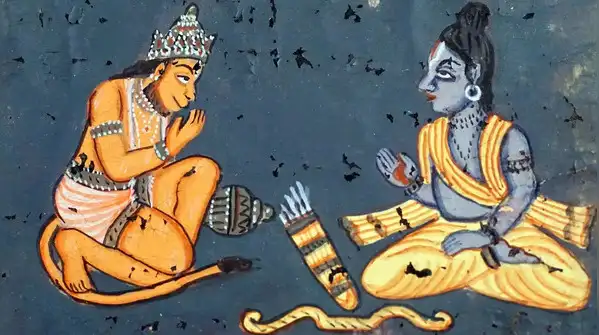- News
- lifestyle
- soul-search
- Budhwa Mangal 2025: What is Bada Mangal, rituals, celebrations, and more
Budhwa Mangal 2025: What is Bada Mangal, rituals, celebrations, and more

What is Bada Mangal?
Bada Mangal, also known as Budhwa Mangal, is a series of Tuesdays that fall in the month of Jyeshtha in the Hindu Calendar, which is basically May-June in the Gregorian calendar. The Bada Mangal spans 4-5 Tuesdays, and these are considered extremely powerful and pure to pray to Lord Hanuman and ask for his blessings.
And unlike Hanuman Jayanti, which celebrates the birth of Lord Hanuman and is observed across India on a single day, Bada Mangal is mostly celebrated in parts of Uttar Pradesh, Rajasthan, and Delhi across a month.

How did Budhwa Mangal start?
The origin of Bada Mangal, or Budhwa Mangal, is not linked to a Hindu devotee or King, but rather a Muslim ruler and Nawab of Lucknow. It is believed that Nawab Wajid Ali Shah and his wife became devotees of Lord Hanuman and started the tradition of Bada Mangal after their son became better when they prayed to Lord Hanuman. To express their gratitude, the couple helped build and renovate a Hanuman temple, and declared that the Tuesdays of Jyeshtha would be celebrated in honour of Lord Hanuman’s miraculous powers.

Budhwa Mangal date and timing in 2025
According to reports and estimates online, in 2025, Bada Mangal will begin on Tuesday, May 13, and will continue till Tuesday, 10 June, 2025. On Budhwa Mangal, a certain time for Puja or rituals is not followed, and people start praying to Lord Hanuman in the Brahma Muhurat, and can remember him anytime they want, or are near to the Hanuman temple.

Rituals of Budhwa Mangal
Bada Mangal is dedicated to Lord Hanuman, and devotees observe it with great devotion and rituals. They follow 21 or 108 paaths of the Hanuman Chalisa, listen to the Panchmukhi Hanuman Kavacham, listen to his stories and heroics, and much more.
Devotees wake up early, take a bath, and dress in clean clothes, and then begin their prayers dedicated to Lord Hanuman. The best colours are considered to be red or saffron during these days, and people either visit temples of Lord Hanuman or set up a small home temple for him in their homes.

What is offered to Lord Hanuman
Through the weeks of Budhwa Mangal, people offer many different things to Lord Hanuman to get his blessings. For example, people offer cholas in the temples, Sindoor to the murtis of Lord Hanuman, Laddoos and bananas as prasad for Lord Hanuman, and even jasmine oil and flowers to please him.
People also offer Lord Hanuman their devotion, and this comes in the form of fasting, praying, visiting temples, and much more.

The Bhandaras on Budhwa Mangal
On the Tuesdays of Bada Mangal, people organise Langars and Bhandaras in big numbers. Hundreds of people organise bhandaras across streets, colonies, temples, and markets, and these are mostly seen in parts of UP or in Delhi. People distribute puri, halwa, laddoo, aloo sabzi, fruits, and more, and these Bhandaras are open to all.
It is believed that on Tuesdays of Bada Mangal, feeding someone in need is the biggest form of devotion.

How to celebrate Bada Mangal
No matter in which part of the world you stay in, you can celebrate Bada Mangal at your home. The 5 Tuesdays of Bada Mangal are celebrated with great devotion, and devotees abstain from any kind of Tamasic or Rajasik foods during these days.
At home, light a diya in front of the idol or photo of Lord Hanuman, and chant the Hanuman Chalisa or simply say ‘Om Hanumate Namah’ with devotion. Some people also take up the practice of reading the Hanuman Chalisa or the Bajrang Baan 21, 51, or 108 times during the Budhwa Mangal days, or organise Sunderkand Path in their homes.








